
Wat Chalong Temple or simply Chalong Temple (Wat Chalong) is a Buddhist temple complex, which is the largest and most visited in Phuket.
The official name of the temple: Wat Chaiyathararam Temple (Wat Chaiyathararam, Thai name: วัดไชยธารรรรร)).
The full original name of the Wat Chaiyatararam temple is practically not used, except for the monks themselves and some local residents, as well as guides conducting tours of the temple.
Chalong Phuket Temple was built in the early 19th century. Locals and many Thai tourists come to the temple to pray and pay homage to several revered monks who were the founders of Chalong, among whom were Luang Po Cham and Luang Po Chuang (Luang Pho Cham, Luang Pho Chuang). These two monks, in the battle against the Chinese rebellion in 1876, thanks to their good knowledge of herbal medicine, helped local residents and treated the wounded.
The Buddhist temple complex that we see at the present time was not originally such, over time the temple grew, and new buildings appeared on its territory.
Chalong Temple is an impressive temple complex, on the territory of which there are: shrines, a bell tower, temple buildings, a crematorium, a garden, a small fountain, gazebos, shopping and souvenir shops.
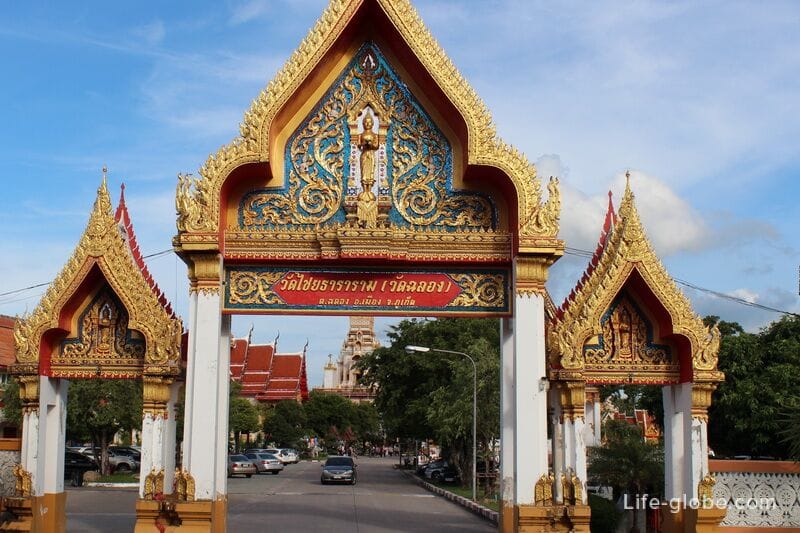

The most impressive and visited building of the temple complex is the Chedi Phra Mahathat Chedi.
The Chedi (stupa) was built in 1999-2001 to store a holy relic - a part of the humerus of the Buddha, in 1999 donated by the Government of Sri Lanka to King Rama IX of Thailand on his 72nd birthday.
Chedi has three floors and a 60-meter height and is still striking from afar. The sharp dome of the chedi is directed to the heavens.
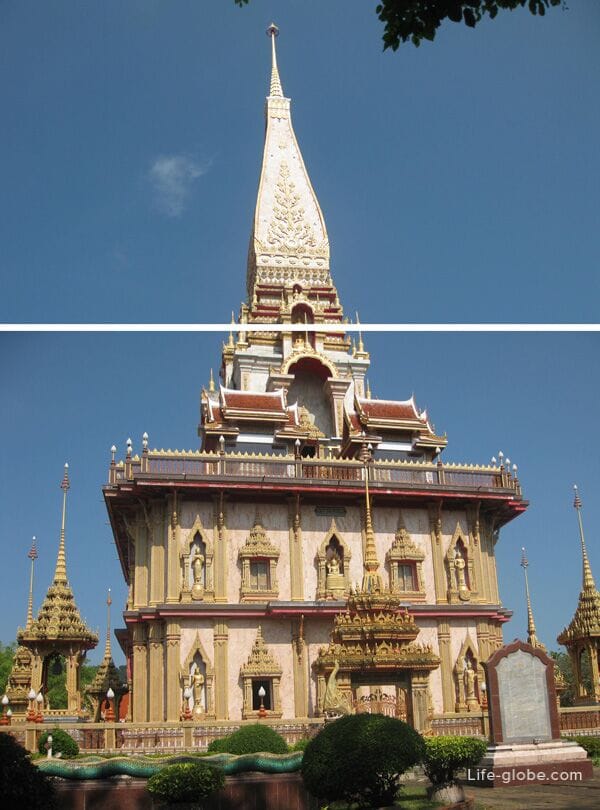
You can enter the Chedi, shoes, as usual and according to the rules of Buddhist culture, we leave at the entrance.

The interior of the Chedi is impressive.
The walls and ceilings are decorated with colorful paintings and murals illustrating the life of the Buddha, and many donated golden statues are placed in the halls.
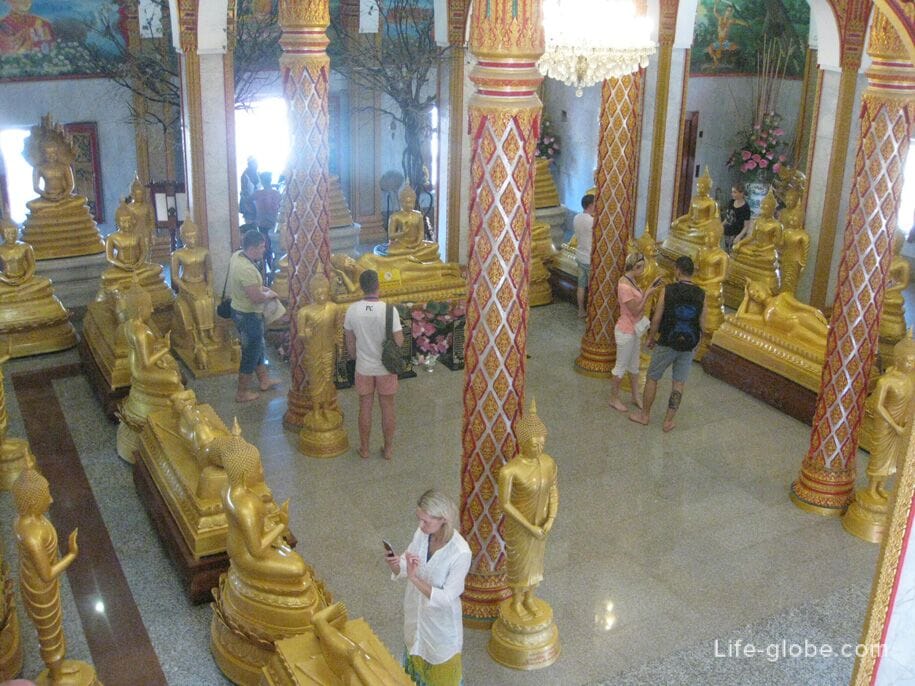
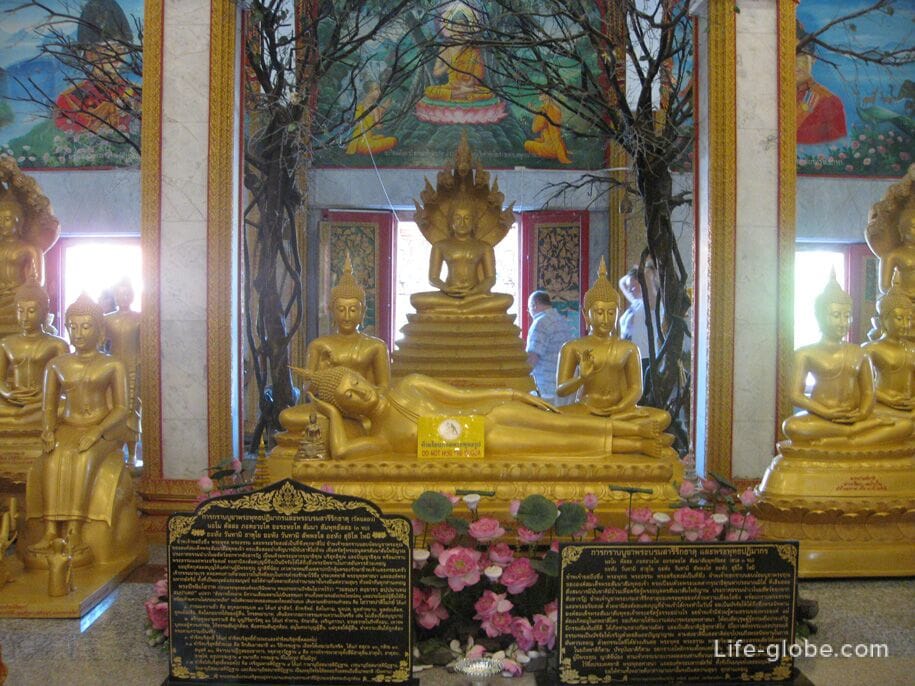
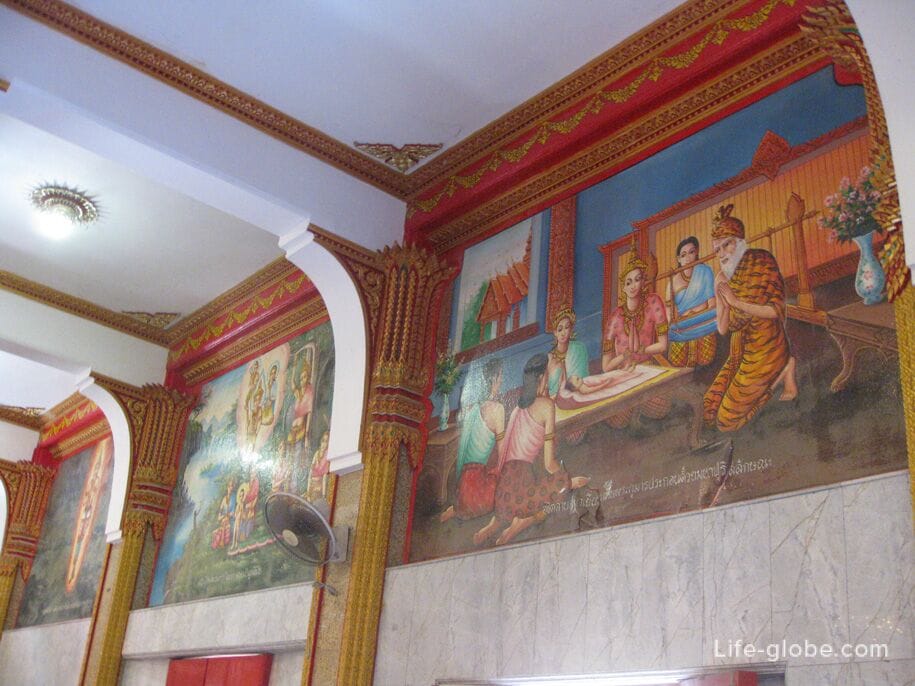
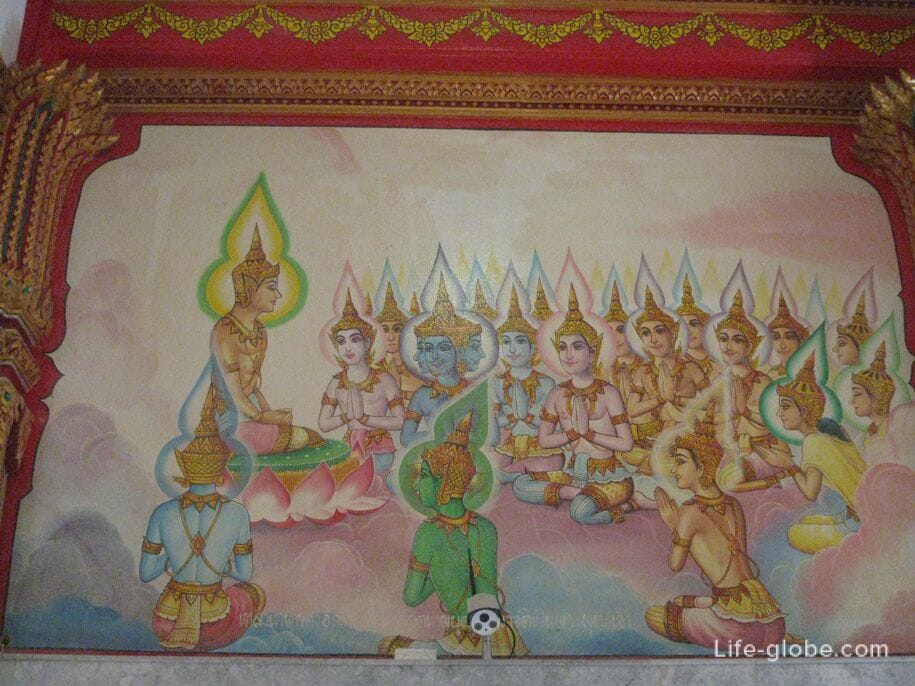


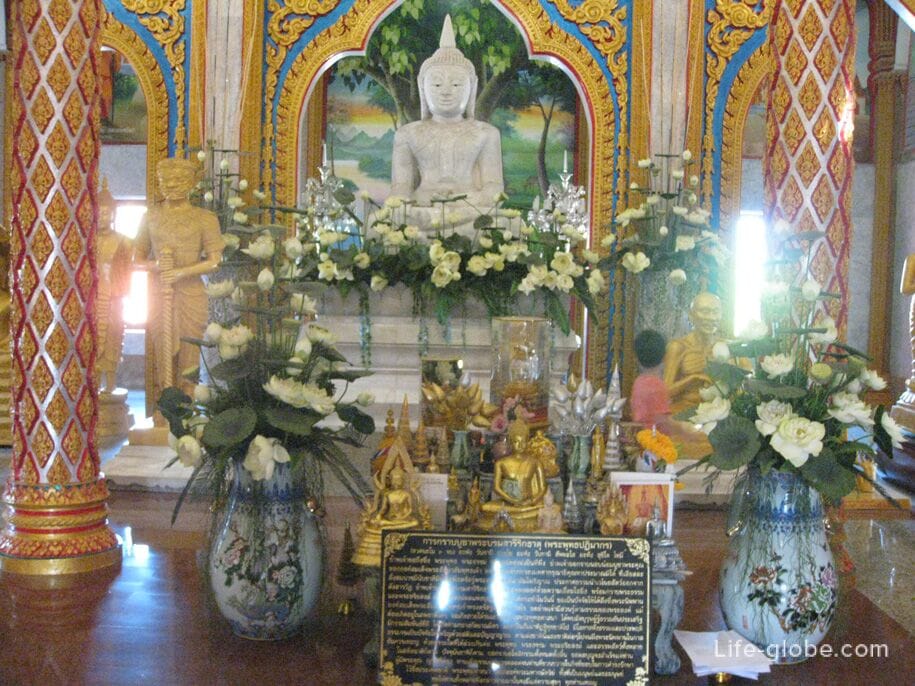
During the ascent of the chedi, you can go out onto an open terrace (balcony), which offers a beautiful, almost 360-degree view of the temple grounds and the surrounding area.
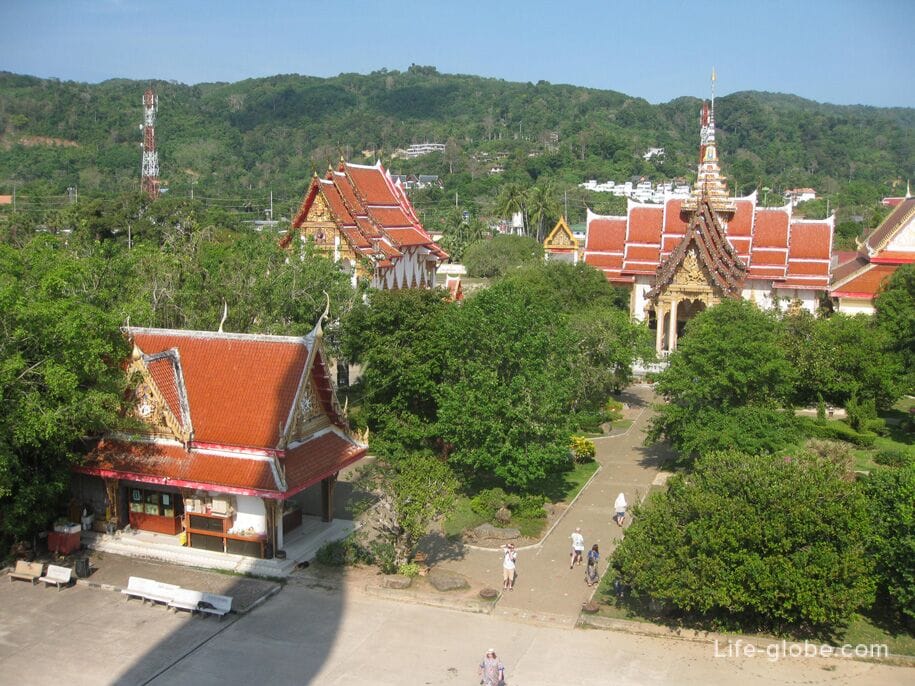
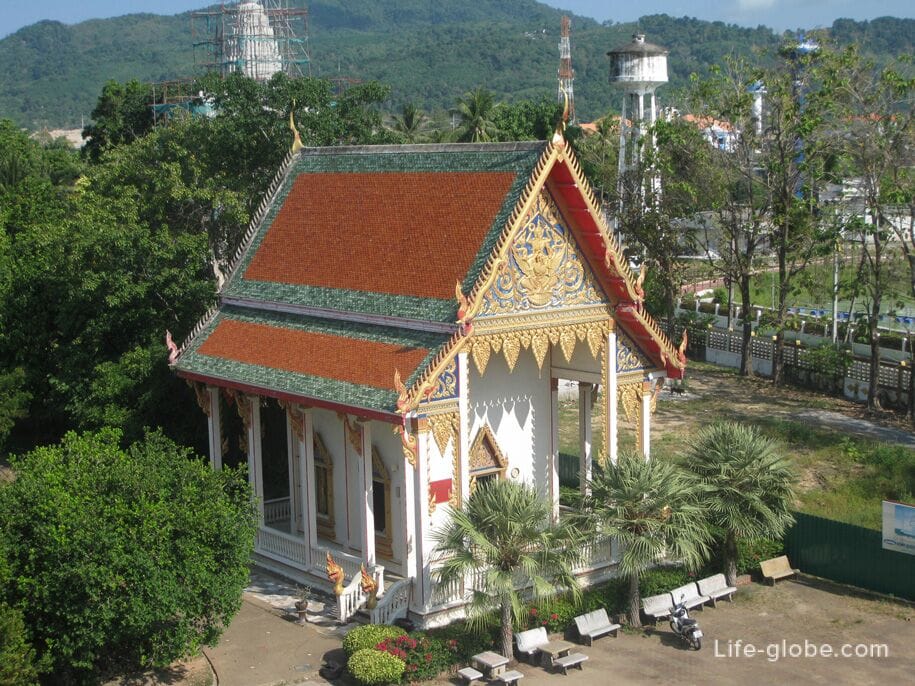
On the upper floor, in a crystal sphere mounted on a lotus flower made of marble, the remains of the Buddha are kept - the same fragment of bone.


Behind the Chedi there is a small, but pleasant and green Wat Chalong garden, in the center of which there is a fountain.

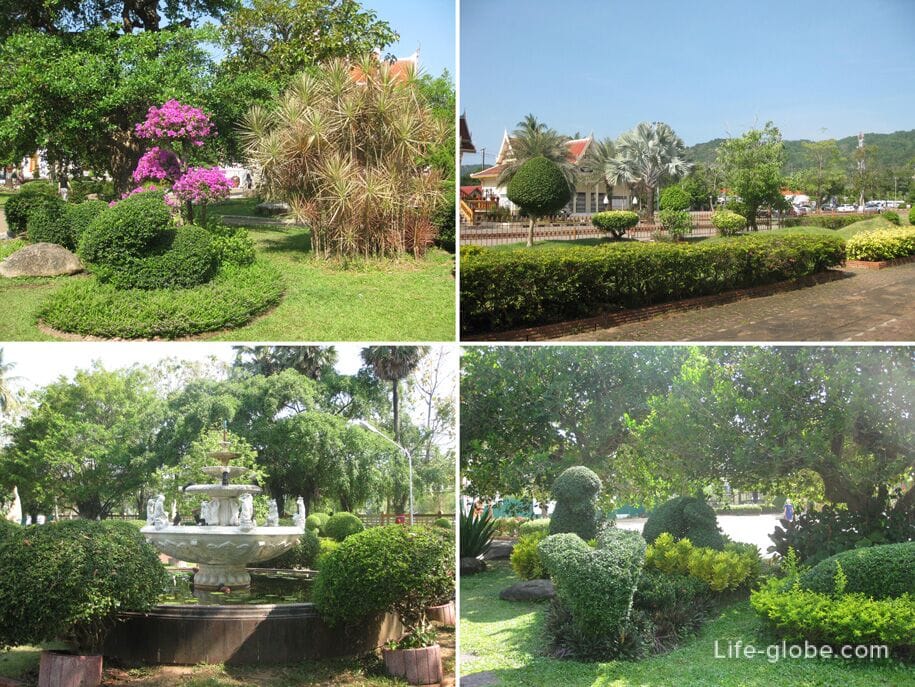
The most striking structure of the Chalong Monastery is the main temple, Wat Chalong itself (Ubosot).
For tourists and guests, the entrance to the main temple is not available. Only monks can stay in this sacred place during the services. But to admire the appearance, take a few photos or even shoot a video - no one forbids.
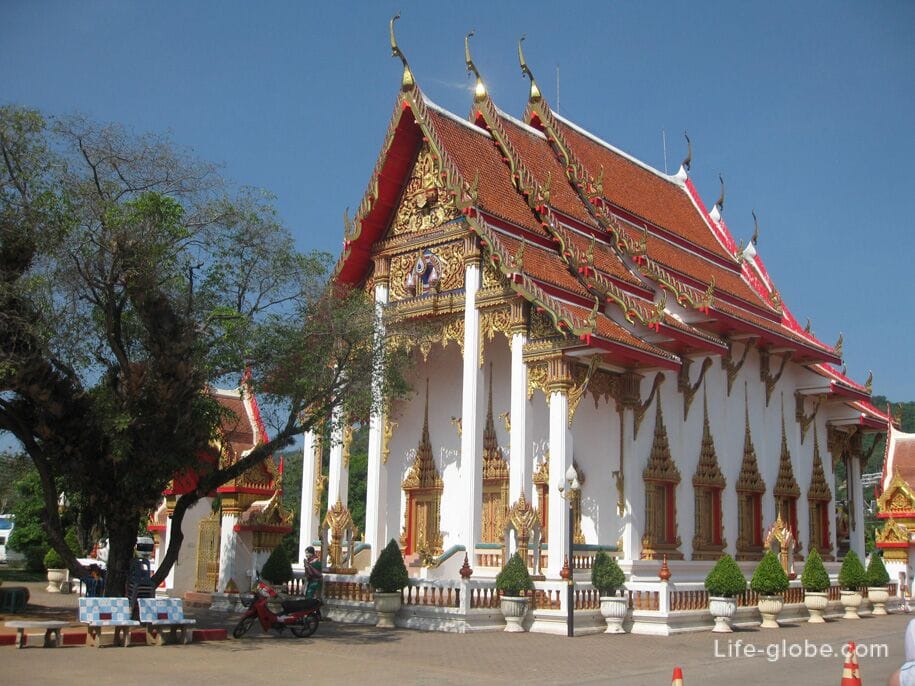
The second most visited, after the Chedi, is the Cruciform Vihara (vihana).
Vihan occupies the main place in the complex and is a pavilion.

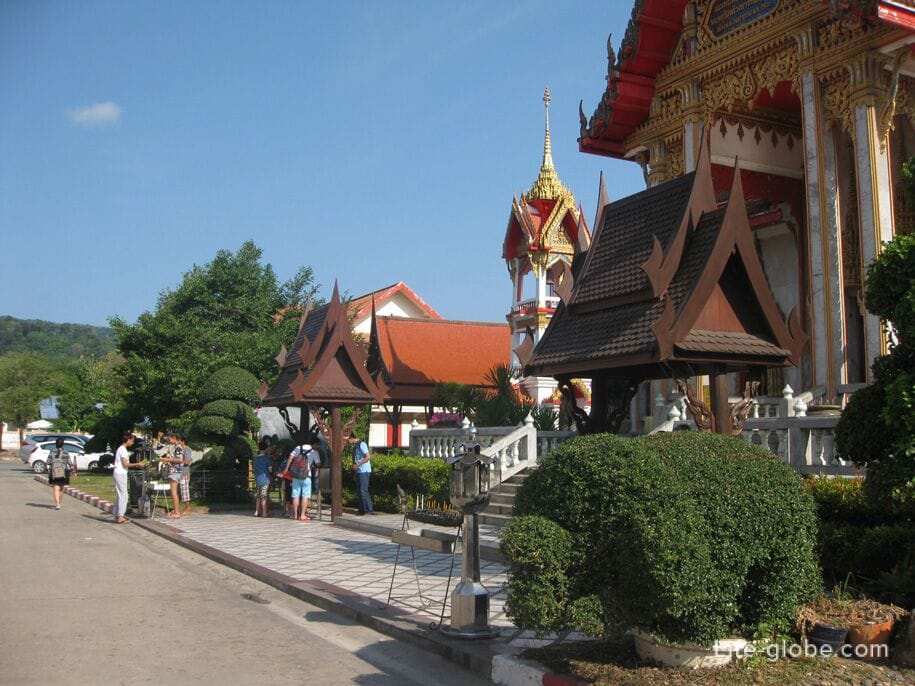
Statues of elephants are placed near the main entrance to the vihara.
The elephant in Thailand is a sacred animal. According to legend, stroking the belly of the largest elephant statue, happiness certainly awaits.

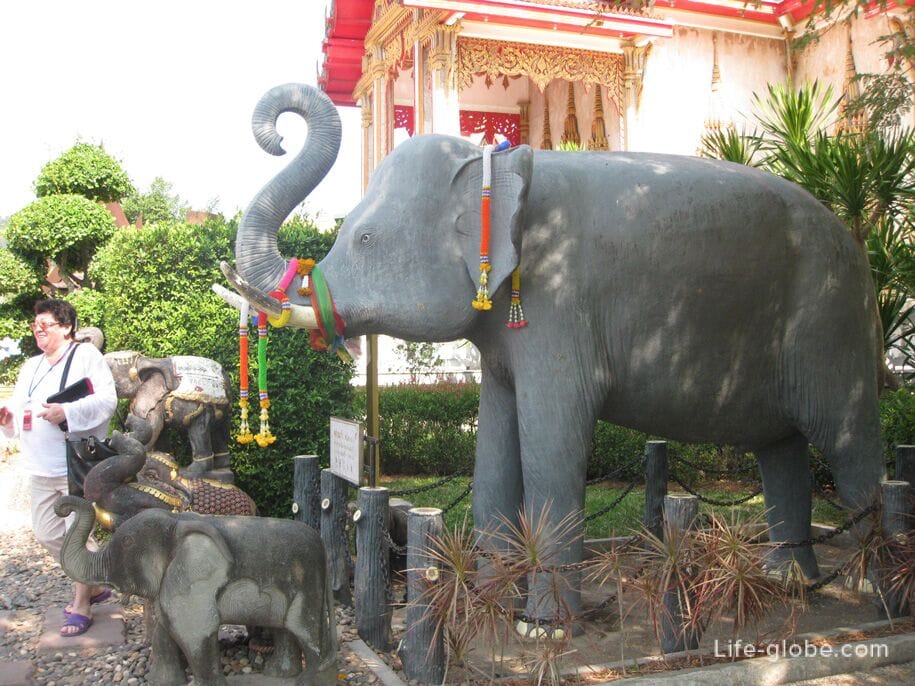
The entrance to the vihara is free, we leave our shoes in front of the entrance.
The interior is bright, but at the same time restrained - it looks very harmonious.
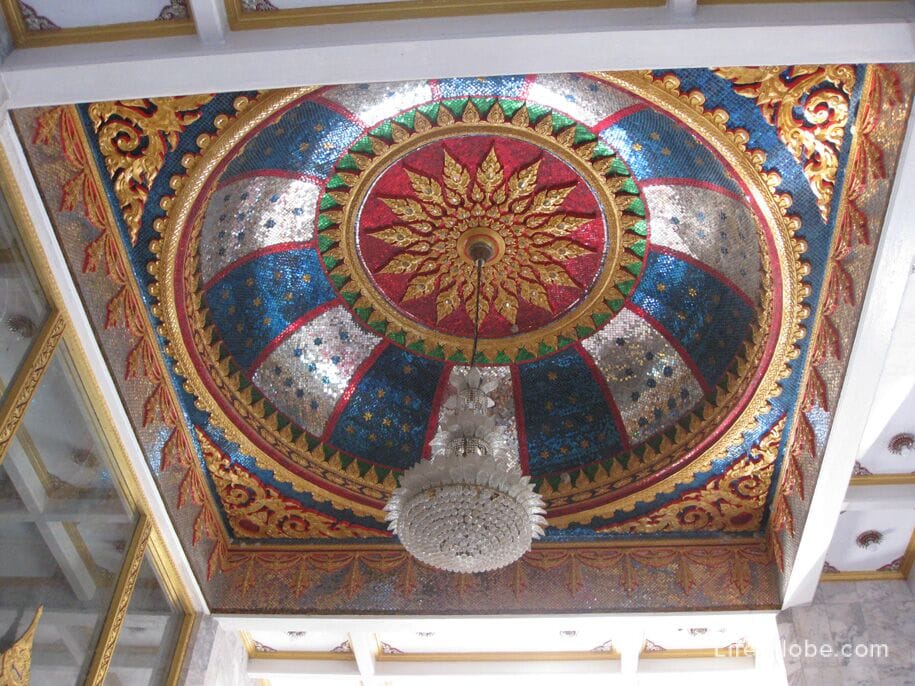
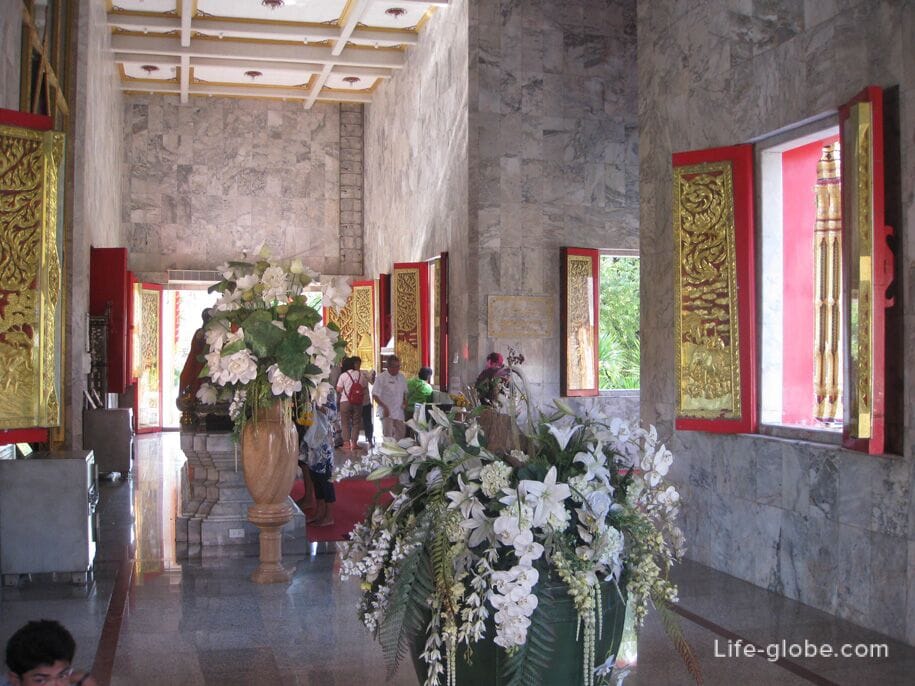
In vihan, in a small and beautifully decorated main hall, there are three bronze statues of monks. These are statues of the most revered abbots of Chalong Temple: Luang Po Chema, Luang Po Chuang and Luang Po Gluama. All of them were known as healers and herbal medicine specialists.
On the statues you can see gold squares stuck on. This is a golden foil. A piece of such foil can be purchased by anyone and glued to one of the statues - for good luck (according to one version), the second version says - a piece of gold foil should be attached to the part of the statue's body that hurts you or your family.

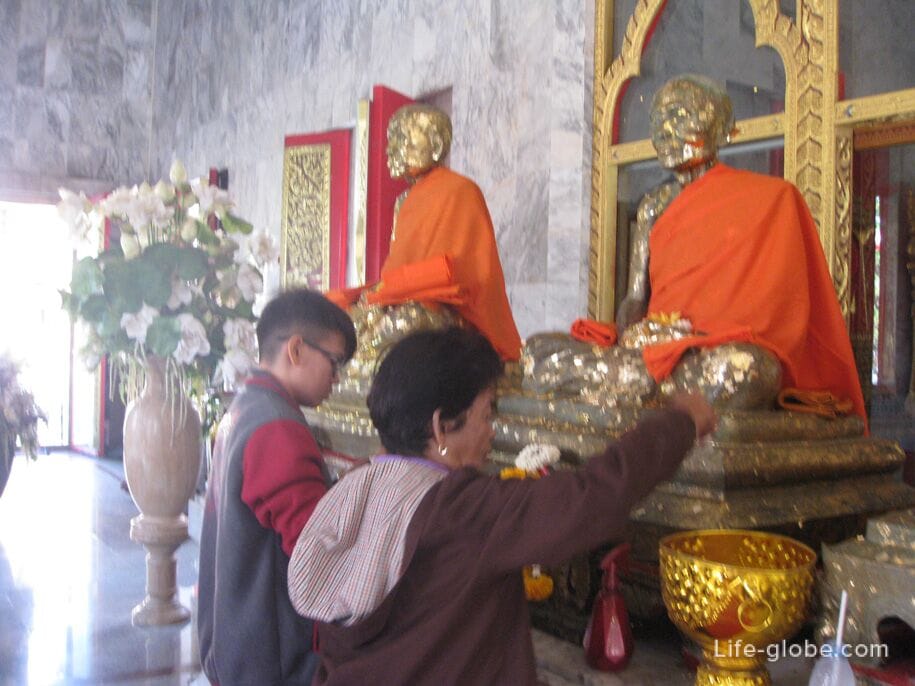
The most pleasant thing in the vihara for tourists is the rite of local divination.
On the floor, in cups, there are numbered sticks. You need to take a cup and shake it in such a way that only one of the sticks falls out. Then look at the number on the fallen stick, go to the wooden shelf and take a piece of paper with a prediction corresponding to the number on the stick that fell out of the cup. Your prediction will be written on a piece of paper. The texts on the pieces of paper are written in Thai and Chinese. If there is a monk in the temple during your visit, he will help with the translation.
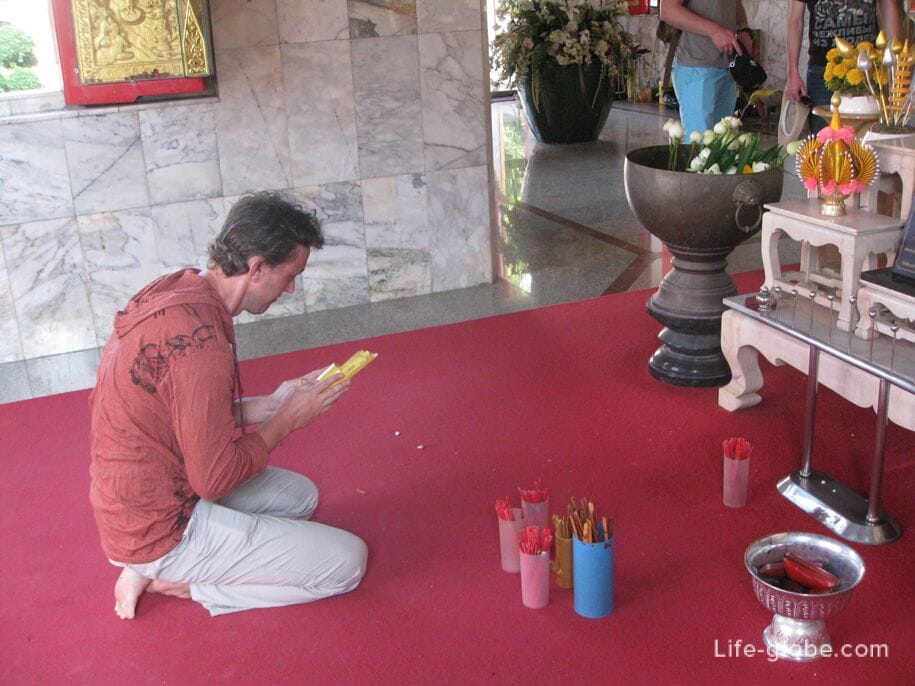

Opposite the vihan is a large brick oven, from which explosions (pops) are heard from time to time.
According to tradition in Buddhism, such explosions are used to scare away evil spirits. However, it is said that in Wat Chalong, explosions announce that prayers have been answered. Thais buy firecrackers and blow them up as a sign of gratitude.
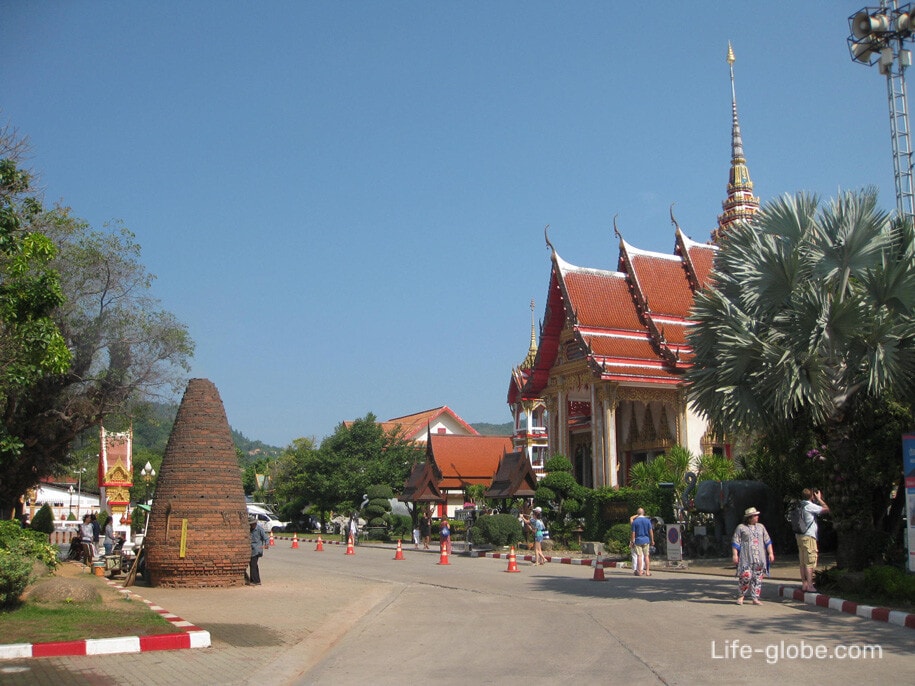

Also on the territory of the Chalong Temple, a dark wood structure - Kuti Luang Po Chema attracts attention.
Luang Po Than himself lived in this room during the period when he was the abbot of the monastery. The original building has not survived to the present day, therefore, the structure that we can see today is restored from preserved photographs of Kuti.
You can go to Kuti - there are wax statues of abbots and recreated old interior, as well as old furniture.



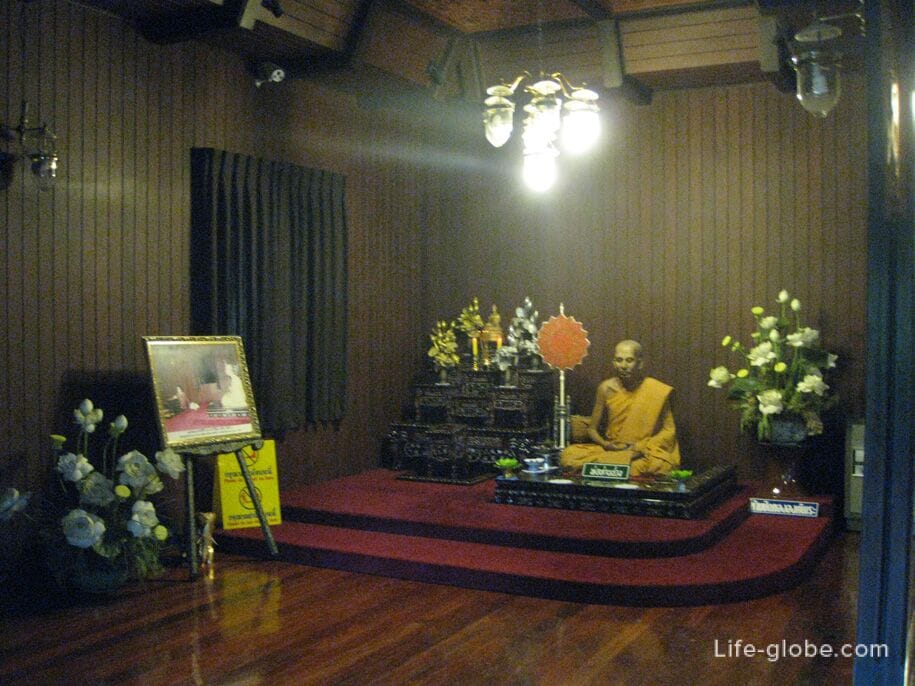

The Chalong Temple does not end there.
In addition to all of the above, on the territory of the temple there are: the abbot's dwelling; crematorium and farewell hall; gazebos; bell tower; shops where you can buy religious souvenirs, Buddha figures and monks, Buddhist literature, incense and firecrackers; as well as cafes and retail shops with clothes, drinks, souvenirs and other small things.


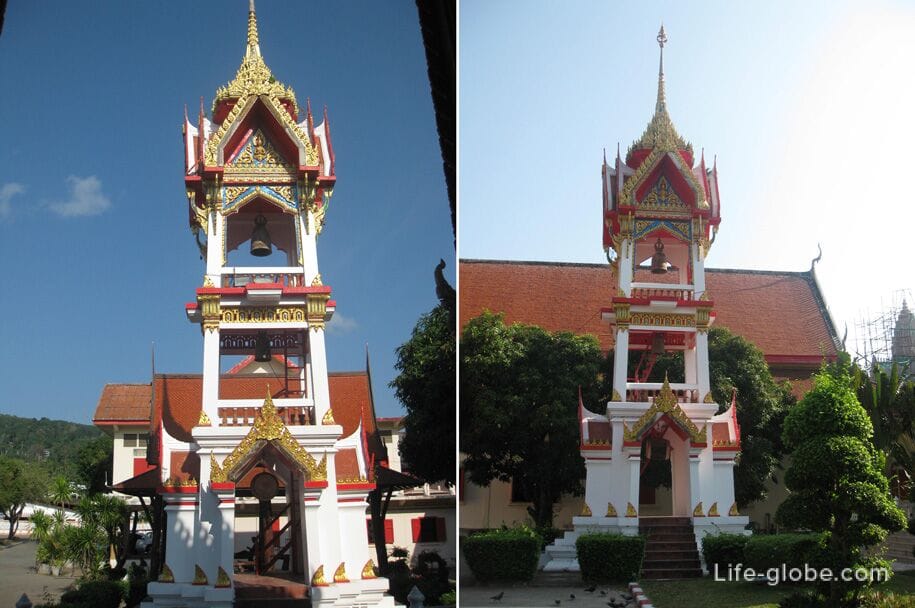
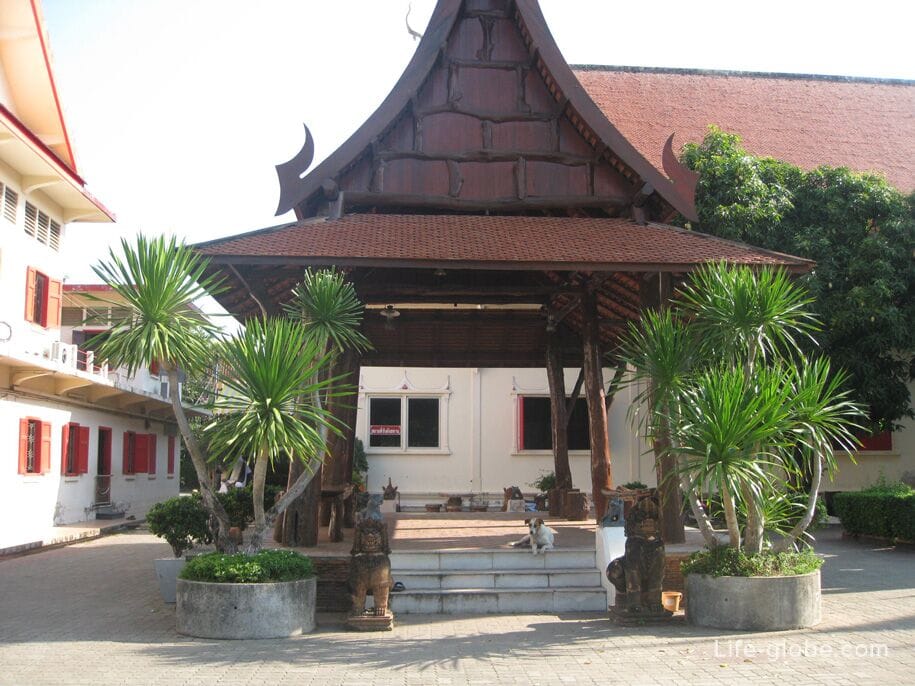
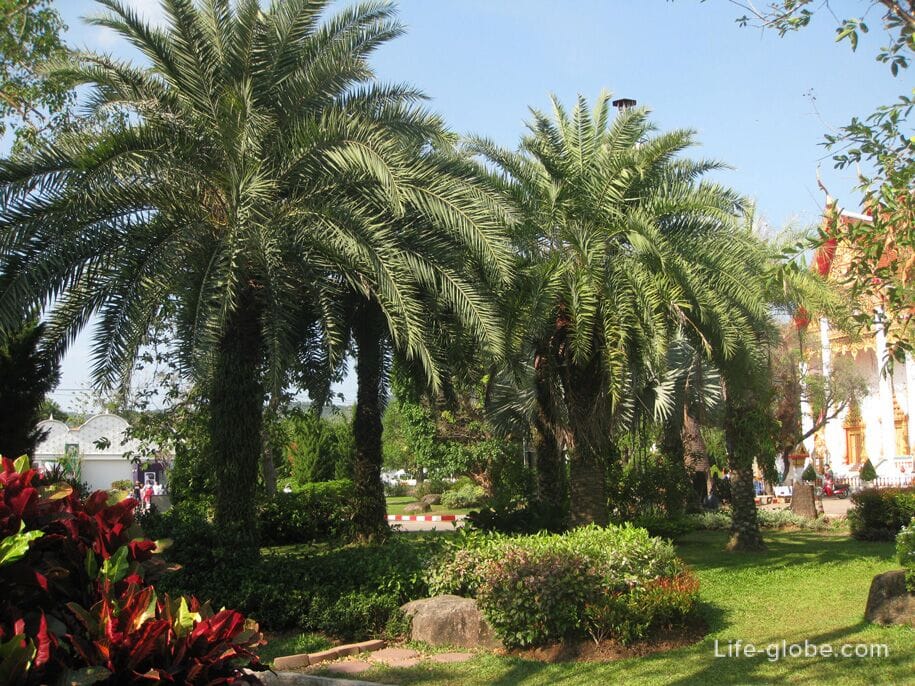
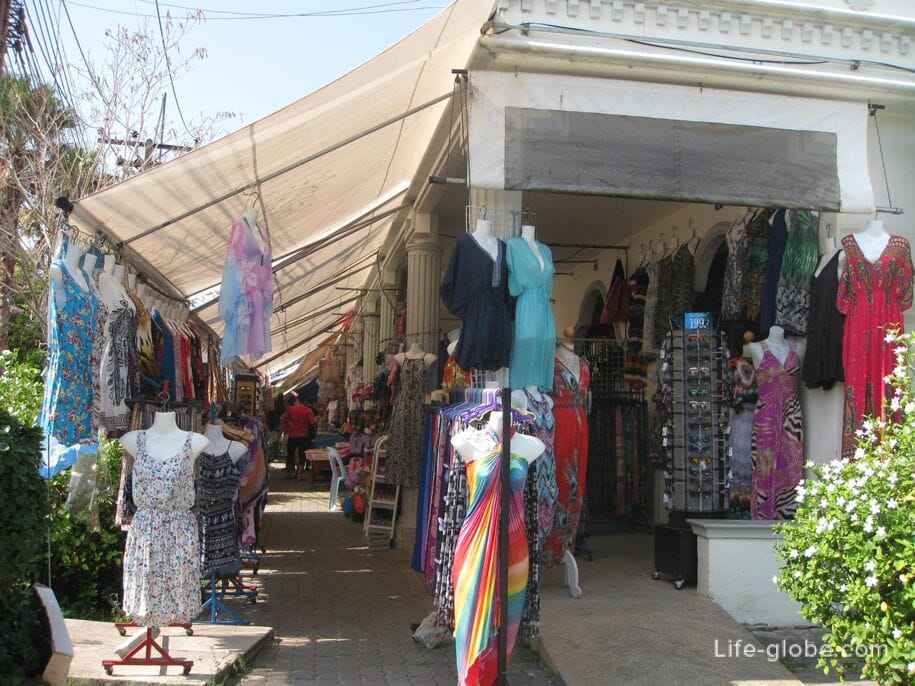
As in all Buddhist temples, Chalong Temple has a dress code that all visitors must observe.
1. It is strictly forbidden to enter the temple buildings in shoes. Shoes must be left outside, near the entrance.
2. Women should cover their shoulders and knees.
As a sign of respect, it is necessary not to speak loudly and in a calm tone, to behave with restraint and not defiantly, not to touch statues and other Buddhist relics, and also not to show excessive signs of attention to your significant other.
Visiting Chalong Temple is free and free.
The temple is open daily from 08:00 am to 17:00 pm.
Chalong Temple is located in the heart of Chalong District, at 70 หมู่ที่ 6 Chao Fah Tawan Tok Rd, Chalong, Mueang Phuket District, Phuket 83000, Thailand.
You can visit Chalong Temple with one of the sightseeing tours of Phuket, as well as by yourself, getting there: by taxi, rented car / bike or songteo public bus - local blue buses without windows and doors.
By public transport to Chalong Temple
You can get to the temple by bus (songteo) following the route: "Phuket Town - Karon Beach - Kata Beach". That is, you can take a direct bus from Phuket Town, from the beaches of Kata and Karon.
From Patong Beach, you can get to Phuket Town, or, which is faster, before reaching Phuket Town, get off at the ring near the Central Phuket shopping center, cross the road and take the bus "Phuket Town - Karon - Kata".
From the beaches of Rawai, Yanui and Nai Harn via Phuket Town. Or, which is faster, get off at the first and only ring on this route - Chalong. You can get out in front of the ring, walk a little forward, turn left and wait for the Phuket Town - Karon - Kata bus. Or, go outside the ring, cross the road and also wait for your route.
From Kata Noi Beach, walk or drive to Kata Beach, the distance is approximately 1 kilometer. And then, as well as from Kata beach.
From the rest of the island's beaches via Phuket Town.

All accommodation facilities in Phuket (hotels, villas, houses, apartments), both near beaches and more remotely from those, can be viewed and booked here